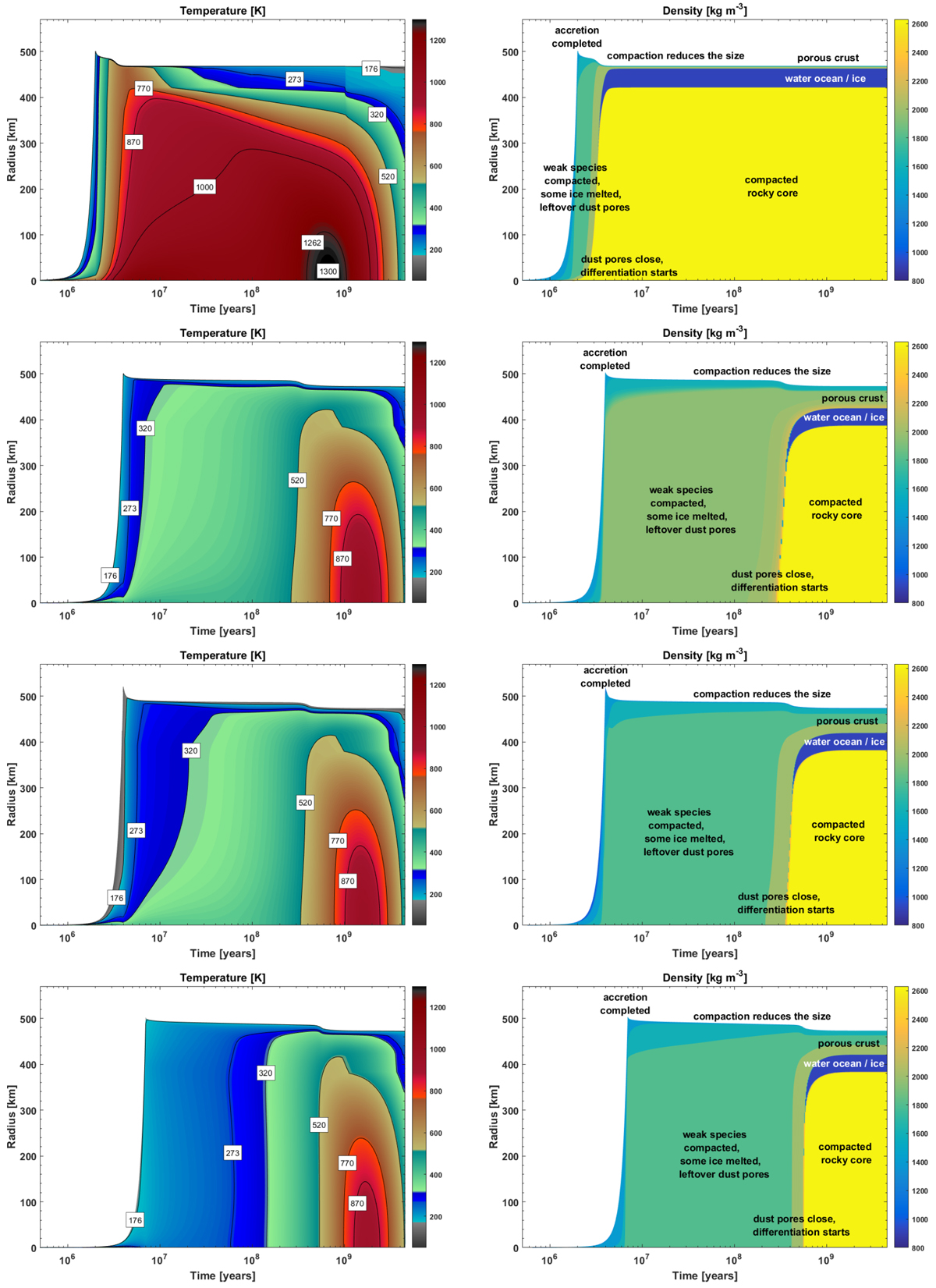Fig. 5

Evolution of the temperature (left column) and density (right column) assuming accretion of Ceres in situ (first, second and fourth rows) and accretion and subsequent evolution in the inter-planet disk (third row). The accretion time is tac = 2 Myr (top row), tac = 4 Myr (second and third rows) and tac = 7 Myr (bottom row). Due to the sluggish compaction of the rock, the water separates very slowly on a time scale of hundred millions of years. The differentiation is not complete because a porous undifferentiated crust is retained. The water layer can be frozen at present (accretion in AB, tac < 7 Myr) or remain liquid at the base (tac ≥ 7 Myr). Free H2O is present inthe ocean or ice layer, while in the undifferentiated crust and in the porous outer core, interaction between the liquid water and the rock results in aqueous alteration if the precursor material contained dry silicates. The interior is colder for the inter-planet disk scenario. A warmer present-day interior is obtained for a longer accretion, which is an effect of a weaker compaction and, as a consequence, a slower cooling of the interior.
Current usage metrics show cumulative count of Article Views (full-text article views including HTML views, PDF and ePub downloads, according to the available data) and Abstracts Views on Vision4Press platform.
Data correspond to usage on the plateform after 2015. The current usage metrics is available 48-96 hours after online publication and is updated daily on week days.
Initial download of the metrics may take a while.


